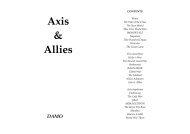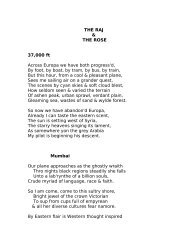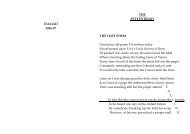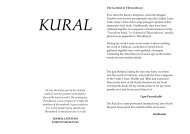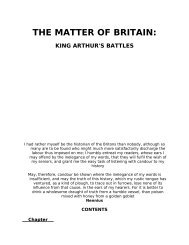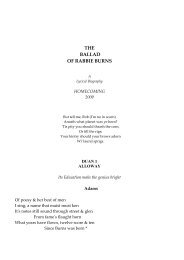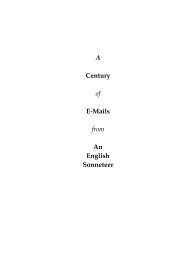Translating Thirukkural.pdf - damowords
Translating Thirukkural.pdf - damowords
Translating Thirukkural.pdf - damowords
Create successful ePaper yourself
Turn your PDF publications into a flip-book with our unique Google optimized e-Paper software.
sought to return home. However, the king was endeared so much to their wisdom &artistry that he constantly found excuses to keep them in Madurai. Despite this, the Jainswere adamant on returning, & one night all 8000 of them slipped away into the darkness.As a gift to their host each one had written four lines of wisdom on a palm leaf & left it inthe royal temple. On discovering these events the unhappy King ordered the Nalati(quatrains) to be thrown into the flood of the great Vaikai River. To his astonishment, fourhundred of these floated against the current & washed up on the shore. The now repentantking saw this was an act of God, & ordered the quatrains to be published together as theNalatiyar (quatrainists).Despite their equal status, as they were composed after the Kural, the Nalatiyar will alwaysbe seen as a younger child trying to emulate its superior sibling. This opinion has beenreinforced by the rather forced form in which the text has come down through the ages tothe modern world. It was compiled by a scholar called Pathumanar, who appears to havewanted to present it as another Kural. Indeed, he divided it into the same three parts –Virtue, Wealth, Love ‐ & each chapter into ten individual quatrains. A sister text indeed!Unfortunately, a number of these individual maxims hold only a slender connection withthe title of the chapter in which it is held, showing again how Pathumanar poured theNalati into the successful <strong>Thirukkural</strong> mould. However, tradition is tradition, & despite itsirregularities the senate of time has decreed that the Naltiyar as we know it is set in stone.Jainism has been one of the chief, enriching influences on all forms of Tamil literature, &many believe the Valluvar himself was a Jain teacher called Kundakunda who lived in thefirst century AD. Ancient Jain commentators are found quoting from the Kural & refer to itas ‘emmottu’ – our scripture. In the Sangam Age the Jain poet‐scholars known as theCanror were highly valued by the Pandya kings, respected for their beautiful compositions& mastery of the vernacular language. In the post‐sangam era, it was the Jains whocompiled the eighteen didactic works that the Tamils still hold in high esteem to this day.Yet, despite Nalatiyar being composed by Jains, it is not particularly Jainist – containing,like the Kural, a universal, non‐sectarian message. Whereas <strong>Thirukkural</strong> has a fewscattered mentions of God & religion, the Nalatiyar has none. The Tamils still consider it areligious text, however, & know it by the name, Vellalar‐vetham – the bible of thecultivators of the soil – reflecting that its message is primarily addressed to the commonpeople.When I first began my rendition of Nalatiyar I wanted to do a direct line‐by‐line translationof the quatrains. But on some reflection, I decided to keep the continuity of Valluvar’s kuralform & channel each of the quatrains into those same seven lines. The final product wouldthen become, as I hope it is now, a regular stream of the highest Tamil wisdom. My task




